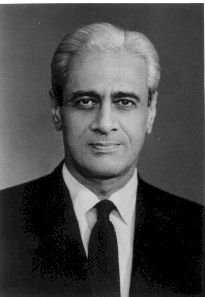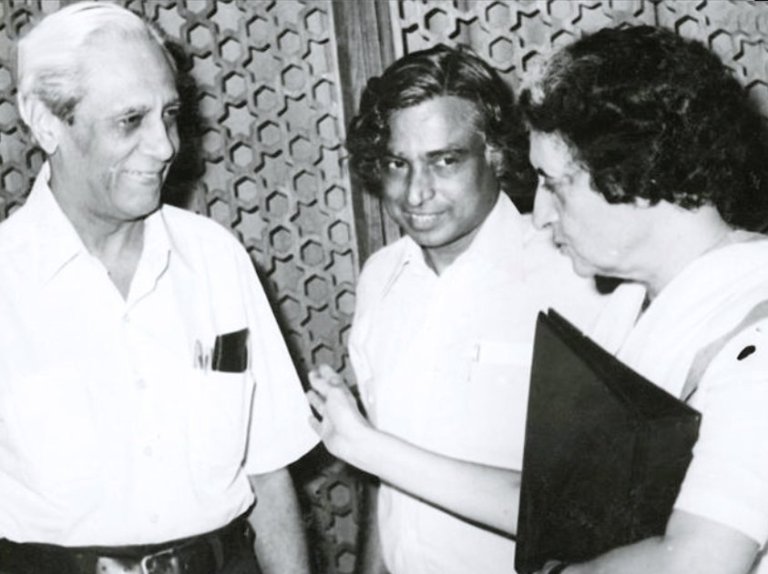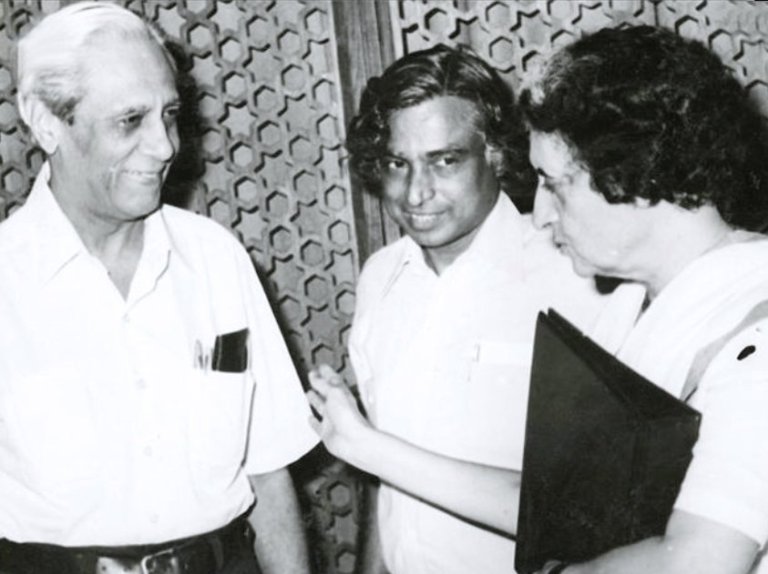One of the few Indian organizations, we can be justifiably proud of is ISRO. Be it the first satellite Arybhatta to Mars Mission to recent Chandrayaan, which was an audacious attempt. Yet not much is known about the man, who actually shaped ISRO to what it is today. While Vikram Sarabhai, is well known as the founder of ISRO, the man who shaped it’s organizational structure and put in a fine process in place, was it’s 3rd chairman- Satish Dhawan, after whom the Sriharikota Space Center is named.

The father of experimental fluid dynamics research in India, one of the eminent researchers in the field of turbulence, was born on September 25, 1920 in Srinagar, and graduated from Lahore University with a rather unusual combination-BA (Maths), BE(Mech) and ME( Engg Litt). When India became independent in 1947, Satish Dhawan, let for US to do his higher studies where he graduated in MS(Aerospace Engineering) from University of Minnesota and a Masters in Aeronautical Engineering from Cal-Tech and a double PhD in maths and aerospace engineering from the same institute. His advisor was the eminent aerospace scientist Hans W. Liepmann, one of the foremost authorities of his time on fluid mechanics.
On his return to India, in1951,he joined IISc as Sr, Scientific Officer, and a year later was promoted as Head of Aeronautical Engg Department. It was during his time, that the department emerged as center of experimental fluid dynamic research in India. In fact it was a pilot project conducted by him that resulted in setting up the world class wind tunnels for aerodynamic testing at the National Aerospace Lab( NAL) in Bangalore.

In 1962, he became the youngest ever director of IISc, and would also be it’s longest serving one too and one of it’s most distinguished. After 9 long years, he went on to a sabatical to his alma mater, Cal Tech, and it was around this time, that Vikram Sarabhai passed away on December 30, rather suddenly. It was then Prime Minister Indira Gandhi who requested him to take charge of ISRO, which was still in it’s infancy then. Sarabhai had earlier been in touch with Dhawan, for advice in setting up a rocket motor facility in India.
Dhawan agreed to take over ISRO, on two conditions, one that it’s HQ would be at Bangalore, and another that he be allowed to continue with IISc( his first love as he called it). Indira Gandhi agreed to both, and he soon took charge after his sabatical at Cal Tech was over.
ISRO was formally born on May 1972, when the space program was placed under a separate Dept of Space, till then it was under Dept of Atomic Energy. Dhawan took over as both Chairman of ISRO, and Secretary of Dept of Space, beginning a long and succesful stint. Basically India’s space program is handled by 3 institutions, Dept of Space responsible for the ideas, Space Comission that handles the nitty gritties of funding, logistics and ISRO responsible for the actual delivery. It was Dhawan who worked out the integration here.
More than anything, he introduced a professional management structure at ISRO. Dhawan set up small teams of experts presided over by a Project Director, which encouraged innovation, and then the efforts of alll these teams were coordinated were channelized towards a common goal be it satellite or a launch. He bought in specialists from outside, and by giving the Project Director a free hand, Dhawan ensured red tapism, the bane of many Indian PSUs, was drastically curtailed. He also encouraged indigenous suppliers to ISRO, most of the firms manufacturing the equipment are Indian.

And he also handpicked the best talent available for the space program. APJ Abdul Kalam was asked to lead the SLV-3 project, Roddam Narasimha to head the research at NAL and UR Rao in charge of the Aryabhatta mission. It was not just in picking the talent, it was the way he handled it too. He encouraged youngsters, and if the project was a success, he gave them full credit, while in case of a failure, he took the responsbility on himself. It was one of the finest examples of leadership.
When the first experimental launch of SLV-3 on August 10,1979 ended up in failure, Dhawan stepped in to handle the fallout. And this is what he said.
Friends, today we had our first satellite launch vehicle to put a satellite in the orbit. We could not succeed. In many technologies, we have succeeded, and in a few more, we have yet to succeed. Above all, I realise my team members have to be given all technological support. I am going to do that and the next mission will succeed.
This was what made Dhawan such an excellent leader, he was the man leading from the front, egging his team on, giving them full credit for success, and shielding them from failure. And when the next launch of SLV-3 on July 18,1980 was a success, he asked Kalam to handle the press conference.
Professor Dhawan’s management philosophy was that when success comes in after hard work, the leader should give the credit of the success to the team members. When failure comes, the leader should absorb the failures and protect the team members- APJ Abdul Kalam.
If ISRO, is one of the success stories we can be genuinely proud of, credit goes to Satish Dhawan, who put in a professional management structure in place, picked the best of talent, gave complete backing and independence to the teams, and pioneered many innovations. India’s first satellite Aryabhatta, development of communication satellites like INSAT and remote sensing systems like IRS are all due to Satish Dhawan’s efforts. He made Vikram Sarabhai’s dream of effectively utilizing space technology towards India’s needs come true.
Even after retirement Satish Dhawan, took a keen interest in policy matters related to science and technology. He was against militarization of space. The space center at Sriharikota has been named after him, a fitting tribute to a man who literally built ISRO. He passed away on January 3, 2002, India lost one of it’s finest scientists. And yet his legacy lives on in the space center at Sriharikota. And everytime you hear of an ISRO success story, we shall always remember the man who made it possible.
Disclaimer: (The insights expressed in this article are those of the author. This article was not written or edited by https://thetrc.news.blog/ )

